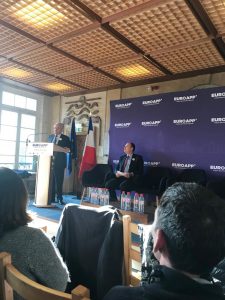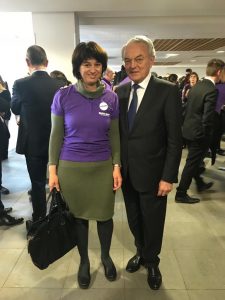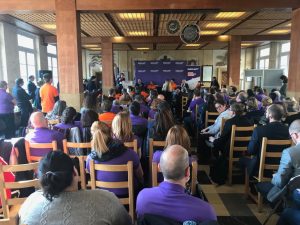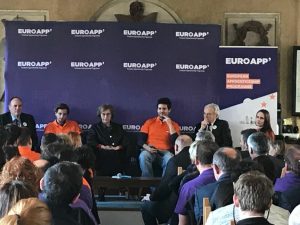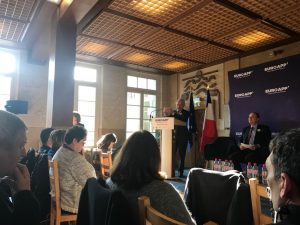EuroAPP Project
About the project
Launched in September 2016, this project aims to develop the long-term mobility of students and trainees (graduated within a 12-month period) as follows:
- implementation of courses that include mobility in the range of 6-12 consecutive months – mobility systematically organized combining work and training plan in the host country.
- identifying barriers and finding solutions to remove restrictions on the long-term mobility of these communities, in order to go beyond the experimental framework and to make this type of work long-term.
European Vocational Centers (VTC) have been partners in mobility projects for several years within the Leonardo programme, and the Erasmus + programme, to be exact,since 2014
With the legalization of the pilot “European Framework of Student mobility” project by the European Parliament and with the support of European institutions, VCT got the opportunity to work together on the training program, putting considerable effort in overcoming the obstacles to long-term student mobility (employer responsibility, student status during mobility, legalization and recognition of learning outcomes upon returning home, etc.), thus “raising the bar”.
With the participation of 55 students and trainees, the partners were able to adopt and increase experience-enriched feedback, undoubtedly learning from it and understanding better the operational reality faced by VTCs involved in student mobility.
Main goals
The main goal of this project was to develop long-term mobility of pupils and trainees (who graduated within a period of 12 months) in Europe: allowing equal access for pupils and students to long-term international mobility and equal recognition of student training and university education.
Specific objectives of the work:
- Models of experimental learning during which students and trainees continued their training alternately from 6 to 12 months in another European country. In order to ensure the implementation of quality work, optimal monitoring and its duration, various tools have been developed with the aim to:
- provide a framework for mobility to ensure training courses if the national framework does not provide it
- determine each training course that is to be implemented
- identify the difficulties faced in the process and the solutions/suggestions being implemented in each step of the process
- evaluate the main benefits obtained from the target group, and on the other hand, determine the main difficulties in order to highlight the best practice and possible improvements.
- promote apprenticeship opportunities for young people, both educational and vocational, giving students the opportunity to continue their education in another European country, similar to that available for higher education students
- develop a sense of belonging to various EU groups (eg. students, companies, professional organizations and social partners, training centers’ staff) and to their respective professional and personal networking
- seek access to necessary resources for the major development of long-term student mobility through regional, national and European organizations
- formulate proposals to the European Commission and the European Parliament, as well as to Member States to which the members of the consortium belong
- develop student apprenticeship based on feedback from the apprenticeship centers and companies hosting the young man as part of the project
- remove difficulties for the long-term mobility of students in Europe, starting with the solutions tested in the pilot project, taking into account the proposals of the consortium
- contribute to building of the European framework for apprenticeships by identifying best practices by the participants on-the-spot
The European Commission has set goals to make the long-term student mobility one of its priority by highlighting the ErasmusPro activities in the Erasmus + 2018. Efforts are being made to provide 400m euros for the mobility of 50,000 students in the range of 3 to 12 months until 2020.


